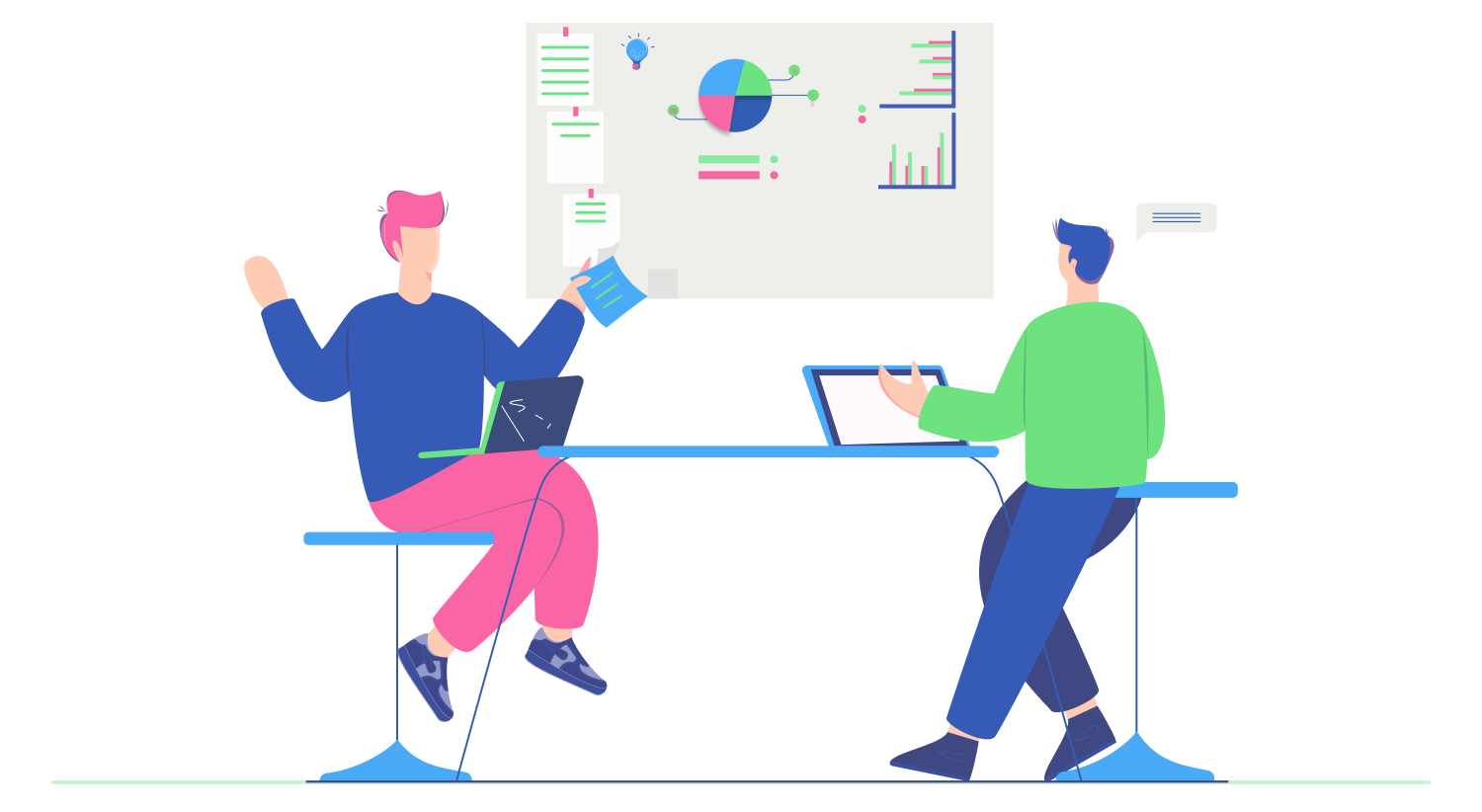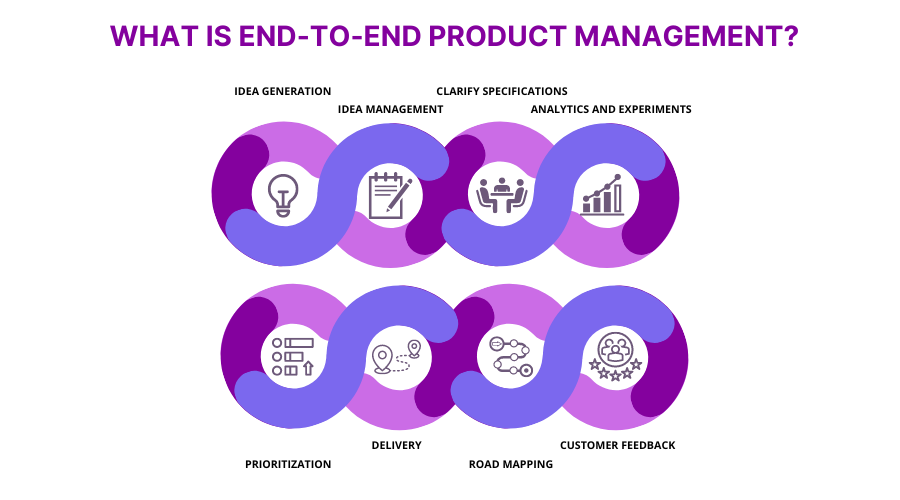
What Is End-to-End?
End-to-End Definition
End to end refers to building a product and providing a service or a system from the beginning to the end, mainly without any help from a third party. IT sectors mostly use the end to end processes. An end to end solutions provider will deliver a product or service with full functionality from scratch.
End-to-end is building a product from scratch until the day you launch it in the market.
In simple words, it is the development process from beginning to end.
Since there is no middleman in the end-to-end process, the business performance and efficiency increase significantly.
End to end mainly involves a vendor who provides all the materials needed to build a product or service from start to finish. The materials required could be labor, hardware, software, written materials, or procedures.
You can also use this phrase to describe a product ready to launch or refer to the complete product roadmap.
However, designers view the end-to-end perspective as a whole. They deal with developing the software and developing the initial design concept until the launch.
Moreover, they also provide customer support to increase the product’s value.
Once you establish the user base to collect feedback, you can add new features to improve the product’s performance and deliver a satisfying product over time.
What Are End-to-End Examples?
To understand what end to end companies do, let’s look at the end to end or E2E examples.
Suppose a company offers videoconferencing products to clients or individuals for events. In that case, they will provide all equipment ranging from monitors to network connections.
In e-commerce, end to end refers to the company that provides services to other companies. They manage sales, track orders, and deliver products for that company.
Now let’s consider the logistics industry. In this end to end example, the service providers include inventory management, storage, and distribution in their package.
Another end to end example we must consider is that of the petroleum industry. Logistics and transportation companies provide cost-effective and flexible end to end services. The logistics companies in the petroleum industry will provide fuel and lubricants to service stations, bitumen to asphalt industries, and aviation fuels to airports.
However, the transportation services will include order planning, loading, and transporting to the ultimate delivery.
Yet another example of the end of end we can look at is that of the procurement industry.
Here, the procurement industry will analyze a company’s supply chain from start to finish. Another end to end process they will have to conduct is to source and order raw materials and distribute the goods to the end consumers.
However, in the procurement software industry, the end to end process will offer organizations an overview of the supply chains.
And all of this will involve:
- The time it will take for the goods to reach the suppliers
- The cost of the goods, and so on
How Do You Make a Product End-to-End?
Both risk and expenses are involved when bringing new products to the market. Idea generation may be the easiest step, but making that vision into reality takes time, effort, and money.
We will discuss five steps you can take to craft your product from scratch with your product development team.
The entire product development works like a funnel. You can put a lot of ideas into it. However, the best ones will only come out.
Step 1: Screening/scoping
Before you embark on this journey called product development, you will have to ask two questions:
- Is the product properly fitting the product strategy?
- Will the product successfully meet the competitive test?
To elaborate a little on the second question. Does it mean that the product will offer the customers something that competitors’ products don’t?
Step 2: BCA or business case analysis
In the second step in the end to end product development process, your team must analyze the product’s market potential.
You can do this using the business case analysis or BCA.
Here you must also ask about the justification of your investment by the expected sales, business growth, and the eventual profit.
Giving you a heads up that performing the business case analysis can often be challenging.
You have to cancel out all the unnecessary and money-losing ideas you can at this step.
Your costs will rise in the third step, developing the product.
Step 3: Product development
In this step, you convert the digital model of your product into a physical prototype. In this product development stage, your product must resemble the working model.
Pro tip: To develop amazing products, use product management software such as Chisel.
As your product turns into reality, you will understand its workings.
You will also better understand the customer requirements.
At this stage, you will also be able to predict the cost of producing and delivering your product to the market.
Step 4: Product testing and validating
At this stage, you will make all the necessary tweaks to your product and present the same to your customers. Companies often conduct this step in a test market.
At this point, you must make well-informed business decisions about whether or not to go ahead with the product before you make the final investment and launch the product.
Step 5: Product launch
Your teams will develop and execute the production, distribution, and marketing plans during the product launch stage.
Your goal must be to generate demand and fill it. Now, wait and watch the ROI of your efforts to develop the product.

What Are the Alternate Ways To Use End-to-End?
Apart from the development process, there are other ways in which the phrase “end-to-end.”
Firstly, you can refer to suppliers as end-to-end, which means that they handle a particular task from scratch and fulfill it entirely until the icing on the cake.
For instance, if you hire a marketing agency, they will manage all your social media platforms, track performance, and ensure a targeted impact.
Your company itself could be an end-to-end supplier who delivers the concerned product or service right from production to delivery, often without any third-party involved.
Secondly, user experience can also be called end-to-end.
Understanding the user journey as a whole with a holistic approach right from their first interaction with your product to how loyal they are to using your product promotes trust in the brand, brand value, and commercial success.
You may also be interested in:
FAQs
There are five stages in the end-to-end product development process.
They are Scoping, business case analysis, development, testing, and launch.
The end-to-end phrase can be used in the development process to describe the product roadmap from scratch until the launch. You can also use the product roadmap software to track the progress of your products.
Secondly, you can use it with reference to suppliers and how they deliver a service or a product from conception to delivery.
Thirdly, teams can use it to describe the user experience from when you first exposed the product to the client until loyalty persists.
